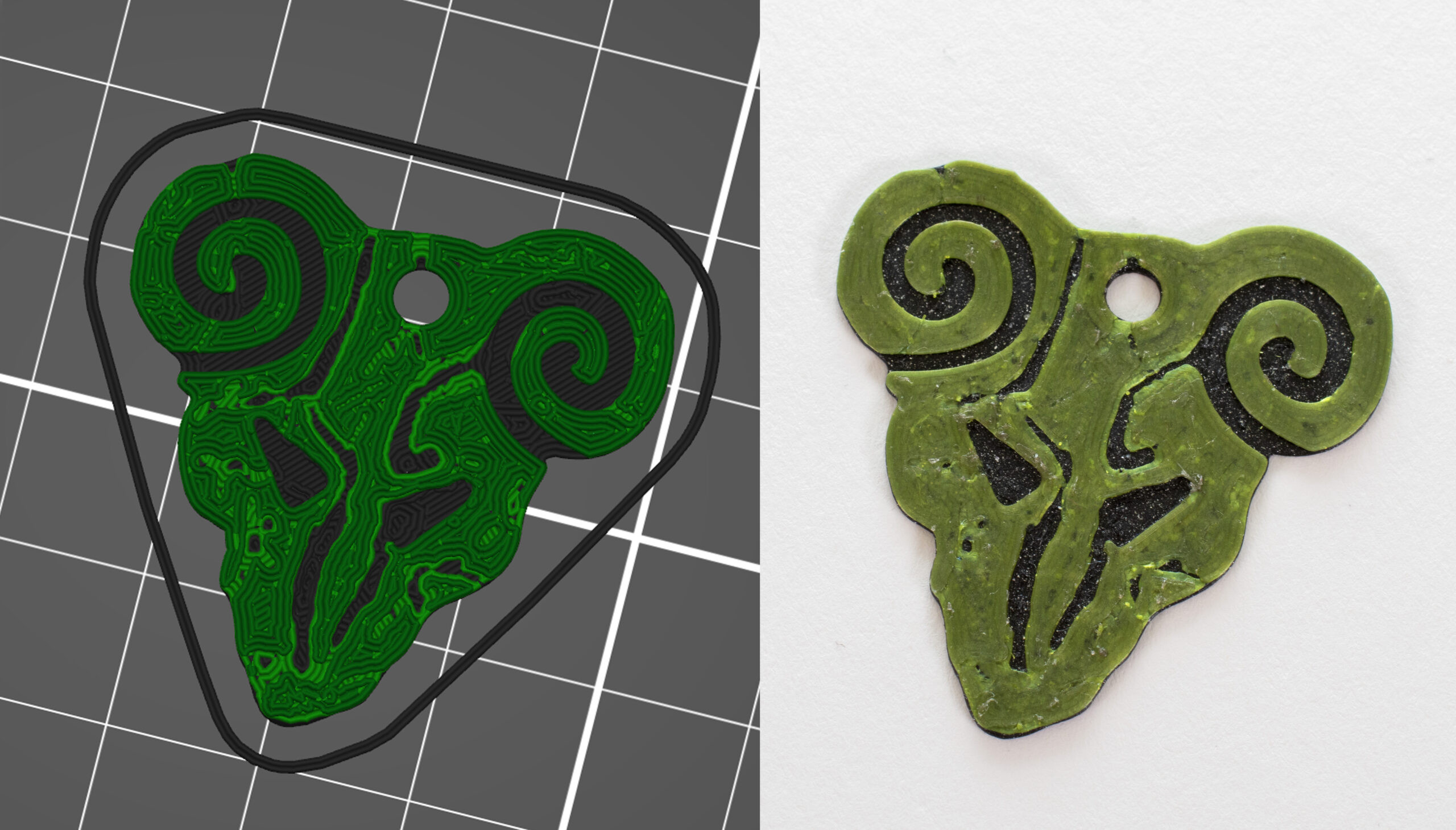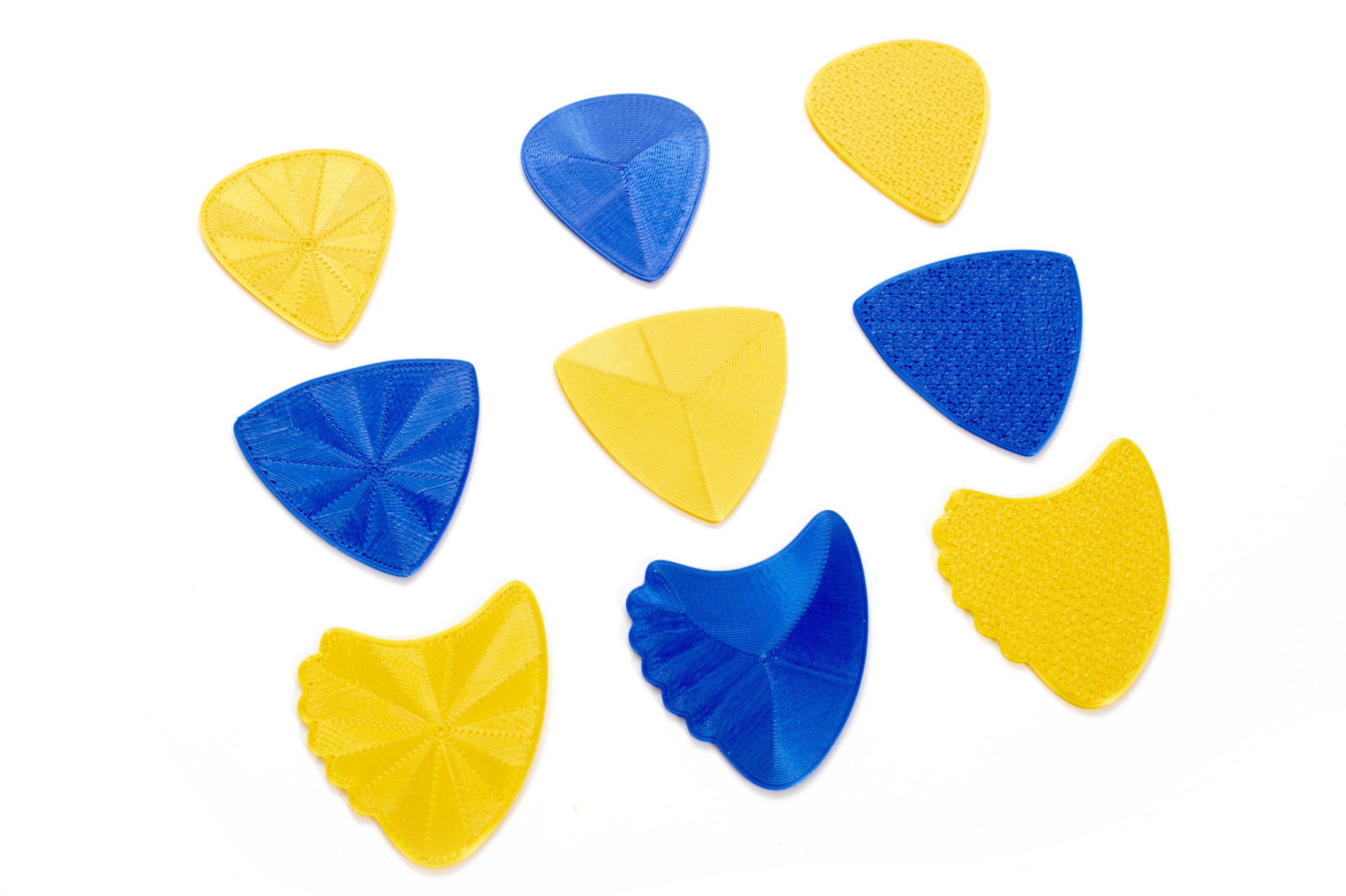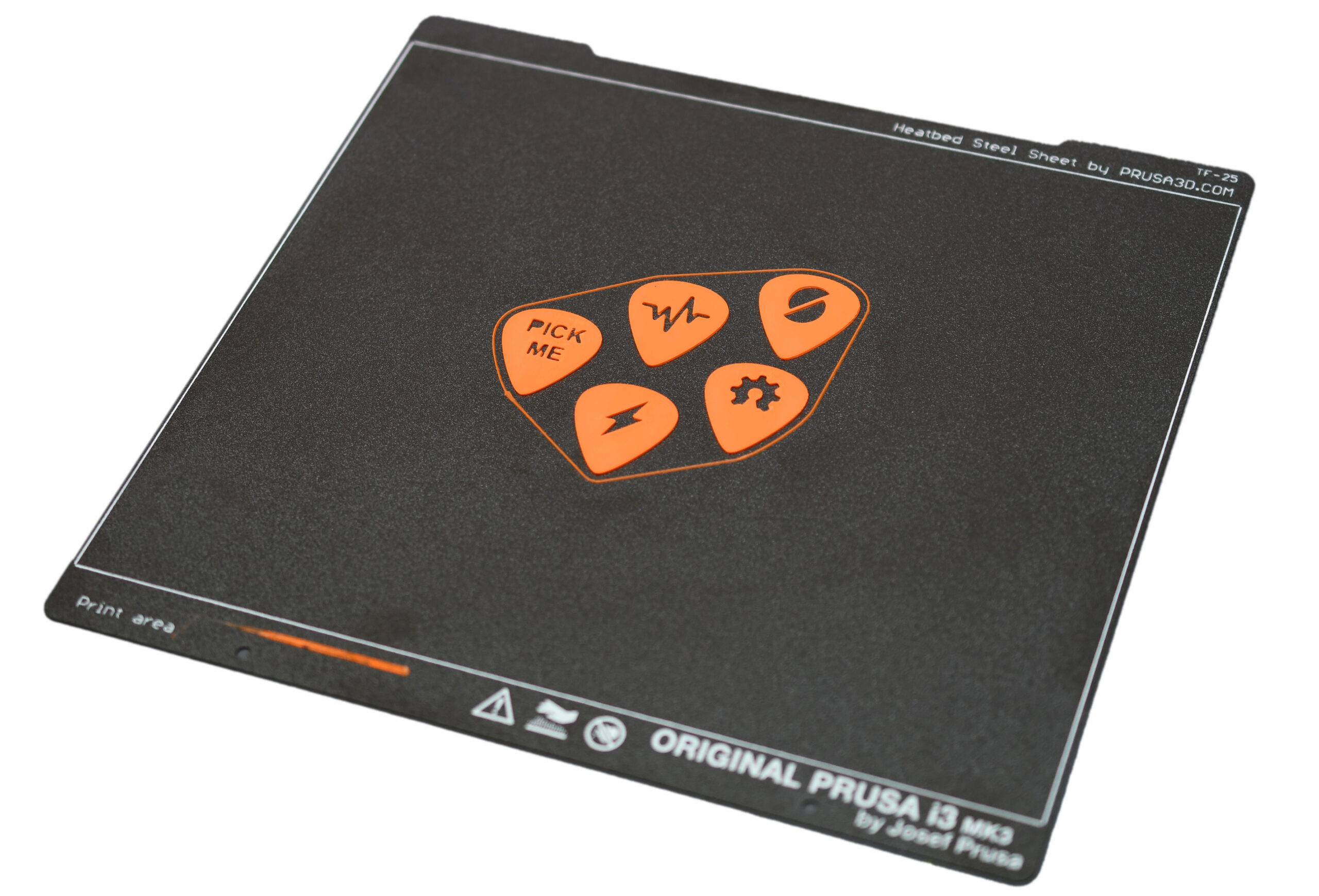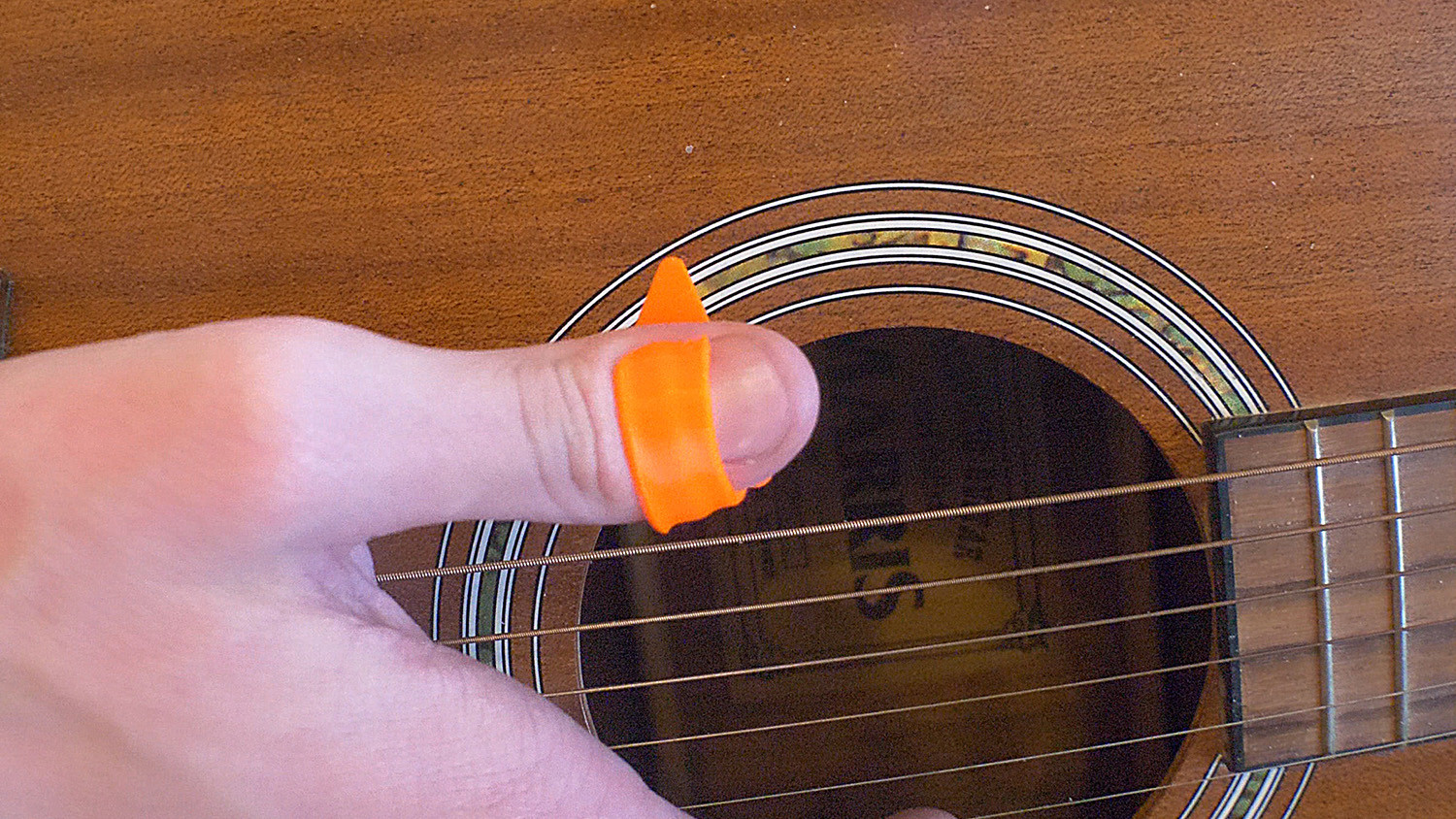Every guitarist knows the struggle: guitar picks are essential, yet they have a magical ability to vanish into thin air. You start a practice session with a handful, and by the end, it feels like they’ve migrated to another dimension. Imagine the frustration of wanting to play your guitar, only to embark on a twenty-minute treasure hunt for a single pick. Under the amp, inside the guitar case, even inside the guitar itself – the search can be exhaustive and often fruitless.
In moments of desperation, unconventional ideas arise. 3D printing a guitar pick? Initially, it sounds like a novelty, a last resort that couldn’t possibly yield a decent result. However, necessity is the mother of invention. Downloading a readily available guitar pick model, firing up a Prusa MINI 3D printer, and just five minutes later – a playable guitar pick emerges. And surprisingly, it’s not just “playable.” It feels and performs like any store-bought pick. This realization – the ability to conjure guitar picks on demand – is a game-changer. It opens up a world of customization and convenience, answering questions many guitarists haven’t even considered. What if you could perfectly tailor your pick to your playing style? What materials would offer the ideal feel and tone? Beyond the standard shapes, what other pick designs might unlock new sonic possibilities? Let’s dive into the world of 3D printed guitar picks and explore these exciting possibilities.
Find Your Perfect Guitar Pick Thickness
The thickness of your guitar pick is a crucial factor in your sound and playing experience. Even minute variations, as small as a tenth of a millimeter, can significantly alter the feel and flexibility of the pick. For acoustic strumming, thinner, more flexible picks in the 0.4mm to 0.6mm range are generally preferred. These thinner picks glide smoothly across the strings, producing a softer, warmer tone ideal for rhythm playing and strumming chords. Conversely, lead guitarists and soloists often gravitate towards thicker picks, ranging from 0.8mm to 1.2mm and beyond. Thicker picks provide greater control, attack, and a brighter, more articulate sound, perfect for fast runs, precise note articulation, and powerful solos. For players seeking versatility, a medium thickness range of 0.6mm to 0.8mm offers a balanced feel suitable for a wide range of styles.
While you can purchase variety packs of guitar picks with assorted thicknesses, you often end up with a surplus of unwanted picks and only a few that truly suit your preferences. 3D printing offers a revolutionary solution to this problem. By simply rescaling a guitar pick model in your slicer software, you can effortlessly generate picks of any thickness you desire. Experiment with a range of thicknesses, identify your personal sweet spot, and then print an unlimited supply of your perfect pick. In PrusaSlicer, remember to create actual copies (Ctrl+C, Ctrl+V) of the model, not instances, to ensure each copy can be scaled independently. To adjust the thickness precisely, unlock the uniform scaling by clicking the lock icon in the right panel and then modify the Z-axis height to your exact specifications.
When selecting your layer height in your slicer, ensure it’s fine enough to accurately reproduce your desired pick thickness. For example, a 0.2mm layer height might round a 0.7mm target thickness up to 0.8mm. PrusaSlicer conveniently displays the actual printed height in the preview, allowing you to adjust the layer height as needed for maximum precision.
This exploration of 3D printed guitar picks follows our previous adventures in 3D printed musical instruments. Previously, we explored the creation of recorders, ocarinas, and kazoos using 3D printing, showcasing the versatility of this technology in music.
 Close-up shot of various 3D-printed recorders, ocarinas and kazoos, showcasing different colors and designs
Close-up shot of various 3D-printed recorders, ocarinas and kazoos, showcasing different colors and designs
Customize Your Guitar Pick Shape and Style
Guitar picks come in a surprisingly diverse array of shapes, each offering unique playing characteristics. Beyond the ubiquitous classic shape, there’s the jazz pick, favored for its pointed tip that enhances speed and precision picking. Tri-tip picks offer a larger gripping surface and three playing edges, extending the pick’s lifespan and offering tonal variations depending on which tip you use. Sharkfin picks, popularized by The Beatles, feature a distinctive shape with multiple edges for producing different sounds. Some players even use the sharkfin’s unique arc to tuck the pick under their index finger for seamless transitions between pick and fingerstyle playing. We’ve recreated these popular shapes in Fusion 360, and you can download print-ready models from PrusaPrinters.org to experiment with these different styles.
But why stop at pre-defined shapes? 3D printing empowers you to unleash your creativity and design guitar picks that are truly unique. Want to print the legendary “Pick of Destiny” from the iconic rock movie? With 3D printing, you absolutely can. Imagine wielding a pick that embodies rock and roll mythology. The author even sculpted the Pick of Destiny in Blender, utilizing PrusaSlicer’s color change feature to replicate its distinctive look using Prusament PLA Galaxy Black, Lime Green, and Mystic Green filaments. You can also download the Pick of Destiny model from PrusaPrinters.org and print your own piece of rock history.
 Close-up of a 3D-printed "Pick of Destiny" guitar pick, showcasing its intricate design and multi-color filament layers
Close-up of a 3D-printed "Pick of Destiny" guitar pick, showcasing its intricate design and multi-color filament layers
Color is another readily customizable aspect of 3D printed guitar picks. Coordinate your picks with your guitar’s finish, your band’s color scheme, or simply choose your favorite hues. Want a pick that perfectly matches your Fiesta Red Fender? Print one in Prusament Lipstick Red for a seamless aesthetic.
 A 3D-printed red guitar pick placed on a red Fender guitar, demonstrating color matching
A 3D-printed red guitar pick placed on a red Fender guitar, demonstrating color matching
A pick matching the color of the guitar (Fender Fiesta Red – Prusament Lipstick Red)
Beyond color, consider adding textured grips to your picks. Embossing a simple pattern, your band’s name, or even a simplified logo can enhance grip and personalization. Use PrusaSlicer’s color change feature to make these embossed elements visually pop. Alternatively, you can deboss shapes to create holes in the pick, further customizing the grip and feel.
With these customization options, 3D printed guitar picks transcend mere accessories – they become personalized, practical merch. Imagine handing out custom-designed picks at your shows – an inexpensive yet memorable giveaway that any guitarist will appreciate. Carrying a few 3D printed picks in your wallet becomes a conversation starter, a tangible example of the power of 3D printing and a thoughtful gift for fellow musicians.
Exploring Infill Patterns for Unique Picks
While simple infill patterns like monotonic lines are functional, experimenting with more intricate infill patterns can add a visually striking dimension to your 3D printed guitar picks, especially when using shiny filaments. Patterns like Octagram Spiral, Hilbert Curve, and Concentric infill create mesmerizing internal structures that are visible through translucent or shimmering filaments.
 Three 3D-printed guitar picks showcasing different infill patterns: Octagram Spiral, Concentric, and Hilbert Curve
Three 3D-printed guitar picks showcasing different infill patterns: Octagram Spiral, Concentric, and Hilbert Curve
From left to right – Octogram Spiral, Concentric and Hilbert curve infill
If you opt for an infill pattern that remains consistent across layers, such as Concentric, it’s advisable to incorporate at least one layer of rectilinear infill within the pick’s core. This strategically placed rectilinear layer enhances the pick’s structural integrity, reducing the likelihood of breakage along the extrusion lines, especially under stress.
Add Practical Features: Keyring Holes and Tuner Peg Holders
For ultimate preparedness, having a backup guitar pick readily accessible is always a smart move. By incorporating a small hole at the top of your 3D printed pick’s grip, you can effortlessly attach it to your keyring, ensuring you always have a pick on hand. Taking this a step further, you can size the hole to match the diameter of your guitar’s tuner pegs (typically 6mm for standard tuners). This allows you to store a pick directly on your guitar’s headstock, eliminating the need for adhesive pick holders or searching through your gig bag. This integrated solution keeps your backup pick secure and readily available without altering your instrument. If you’re designing your own pick from scratch in CAD software, adding this hole is a simple design modification. However, PrusaSlicer offers a more universal and convenient approach. Using PrusaSlicer’s modifier feature, you can add a hole to any downloaded pick design without needing to modify the original model. This eliminates the need to maintain separate versions of each pick design – one with a hole and one without. PrusaSlicer’s modifier tutorial provides comprehensive guidance on this technique.
 A close-up of a 3D-printed guitar pick with a hole at the top, attached to a keyring and also shown fitting onto a guitar tuner peg
A close-up of a 3D-printed guitar pick with a hole at the top, attached to a keyring and also shown fitting onto a guitar tuner peg
In PrusaSlicer, simply right-click on your pick model and select “Add modifier.” Choose from basic shapes or import a custom mesh to define the hole. Then, set the modifier’s infill, top and bottom layers, and perimeters to 0 to create a void. Future versions of PrusaSlicer will streamline this process even further with a dedicated “Negative volume” modifier.
The modifier feature also opens doors to adding other custom elements, such as band logos or names, to your picks. You can extrude SVG files of logos or text to create modifier shapes. Numerous free SVG resources like flaticon offer a vast library of logos and basic shapes readily available for download and integration into your pick designs.
 A variety of 3D-printed guitar picks with different stencil-like logos and designs added using modifiers
A variety of 3D-printed guitar picks with different stencil-like logos and designs added using modifiers
Thumb Picks for Versatile Playing
For guitarists exploring blues or jazz styles, where simultaneous bassline and melody playing is common, thumb picks are a valuable tool to consider. While they may feel slightly unusual initially, thumb picks enhance the clarity of bass notes and facilitate a distinct playing style. Achieving a snug and secure fit is crucial for thumb picks, as slippage can hinder performance. 3D printing is ideal for creating custom-fit thumb picks. Print the thumb pick model at various scales to find the perfect fit for your thumb. You can download a thumb pick model from PrusaPrinters to begin experimenting.
 A 3D-printed thumb pick, highlighting its shape and design for thumb attachment
A 3D-printed thumb pick, highlighting its shape and design for thumb attachment
Material Selection and Pick Durability
After extensive testing over six months, using primarily 3D printed guitar picks, the author initially believed they were virtually indestructible. However, after rigorous strumming on an acoustic guitar, a very thin 0.5mm PLA pick finally succumbed to breakage. It’s important to note that 0.5mm is exceptionally thin for a guitar pick. Generally, 3D printed picks, especially in medium to thick gauges, exhibit impressive durability regardless of the material used.
The primary difference between various 3D printing materials lies in their stiffness and flex. PLA picks offer a feel comparable to commercially available picks of similar thickness. PETG and ASA picks, being slightly more flexible, feel similar to PLA picks that are 0.1mm to 0.2mm thicker. For ultimate durability, Prusament PC Blend produces exceptionally robust picks with a medium flex characteristic. However, purchasing a specific filament solely for printing guitar picks is generally unnecessary. Utilize whatever filament you have readily available. Even small sample spools of 50g are sufficient to print dozens of guitar picks, making it a cost-effective and versatile application of your existing 3D printing materials.
Optimizing Print Orientation and Perimeters
To ensure robust and durable guitar picks, use a minimum of two perimeters in your slicer settings. This perimeter count reinforces the pick’s edges, preventing tearing or chipping during use. For advanced customization, PrusaSlicer’s seam painting feature allows you to precisely control the perimeter seam location. Positioning the seam strategically, away from the string contact area, ensures a continuous perimeter loop in the critical playing zone. The edge of the first perimeter will naturally smooth and round slightly with use, creating a comfortable playing surface.
While elaborate designs or vertical printing might seem appealing for enhanced detail, printing guitar picks flat on the print bed is the most practical and effective approach. This orientation simplifies printing, minimizes support requirements, and maximizes pick durability. The flat, layer-by-layer construction inherently resists delamination, as the primary forces exerted on the pick during playing are perpendicular to the layer lines, not parallel to them.
Final Thoughts: Print Your Perfect Pick Collection
Once you discover your ideal guitar pick thickness, shape, and material, 3D printing empowers you to create an endless supply. No more frantic searches or last-minute store runs. You’ll have a personalized stash of picks tailored to your exact preferences. Furthermore, custom 3D printed guitar picks make exceptional and unique gifts for fellow guitarists or band merchandise. Rock on and happy printing!
